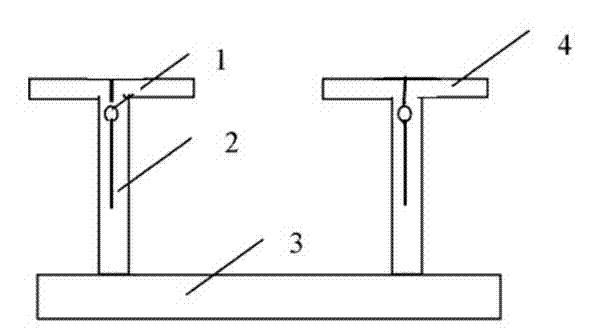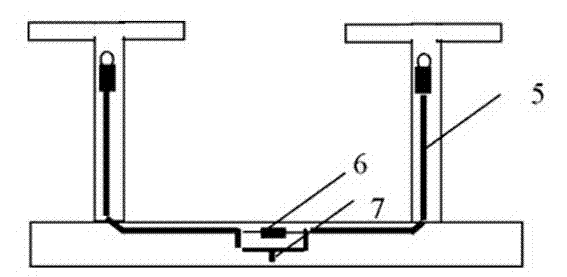Half-wave dipole array element and micro-strip array antenna formed by same
A technology of half-wave arrays and microstrip arrays, applied to antennas, antenna arrays, electrical components, etc., can solve problems such as low gain, inflexibility of passive detection antennas, and poor directivity
- Summary
- Abstract
- Description
- Claims
- Application Information
AI Technical Summary
Problems solved by technology
Method used
Image
Examples
Embodiment Construction
[0021] as attached Figure 1~4 As shown, a half-wave array element includes a copper-clad substrate 3, two half-wave arrays 4 are arranged on the substrate 3, and the front of the half-wave array 4 is provided with an impedance matching opening 1 and an impedance matching slot 2. There is a transmission microstrip line 5 on the back of the half-wave array element 4. The upper end of the transmission microstrip line 5 passes through the impedance matching opening 1 and is connected to the impedance matching slot 2. The lower end of the transmission microstrip line 5 is connected to the feed interface 7. , the lower end of the transmission microstrip line 5 is also connected with a matching resistor 6 .
[0022] A microstrip array antenna includes a frame 8, a plurality of half-wave array elements are installed in the frame 8, and two reflectors 9 are arranged between two adjacent half-wave array elements 10.
[0023] The frame 8 is an aluminum alloy frame, and the reflector 9...
PUM
 Login to View More
Login to View More Abstract
Description
Claims
Application Information
 Login to View More
Login to View More - R&D
- Intellectual Property
- Life Sciences
- Materials
- Tech Scout
- Unparalleled Data Quality
- Higher Quality Content
- 60% Fewer Hallucinations
Browse by: Latest US Patents, China's latest patents, Technical Efficacy Thesaurus, Application Domain, Technology Topic, Popular Technical Reports.
© 2025 PatSnap. All rights reserved.Legal|Privacy policy|Modern Slavery Act Transparency Statement|Sitemap|About US| Contact US: help@patsnap.com



